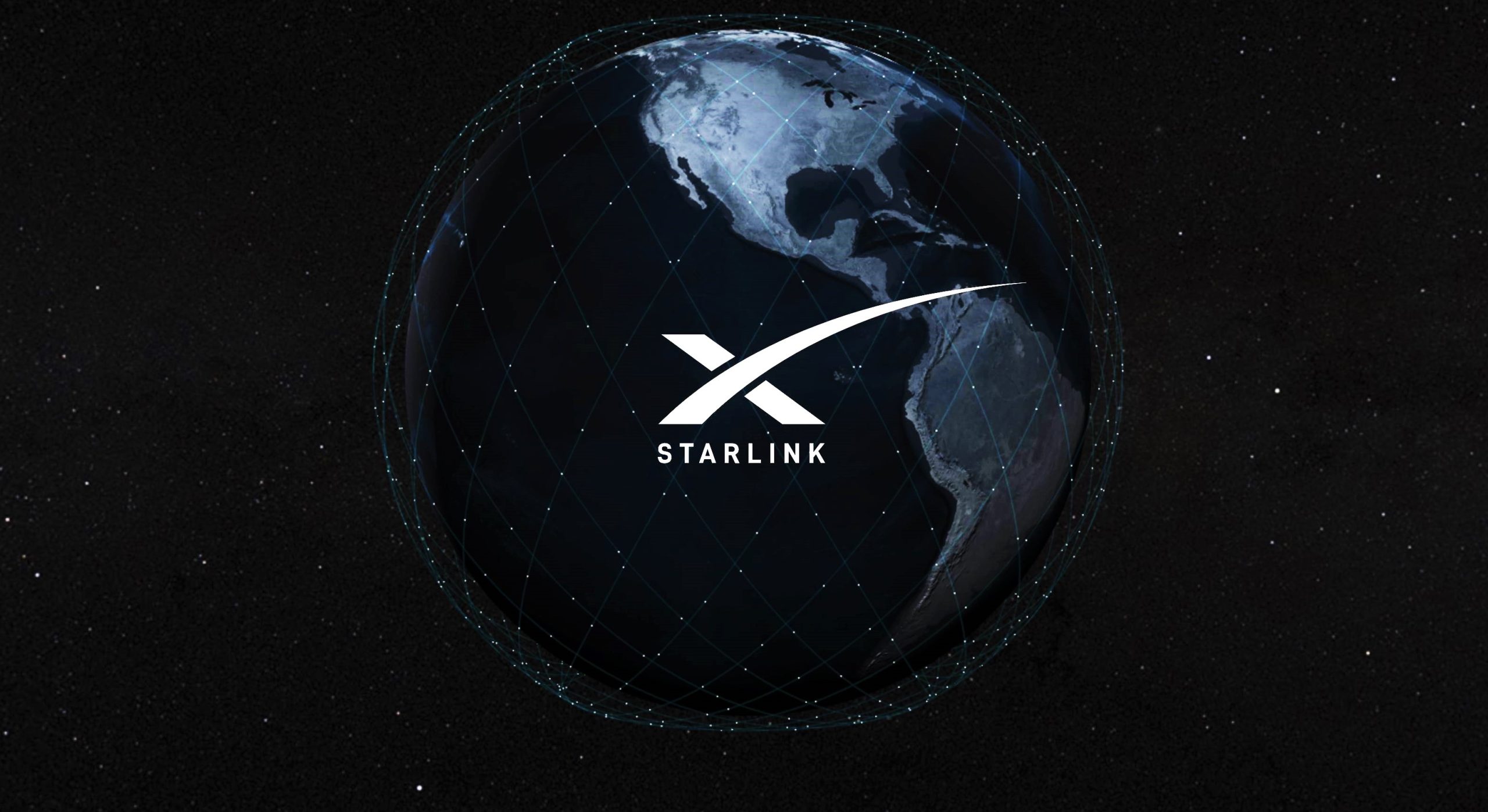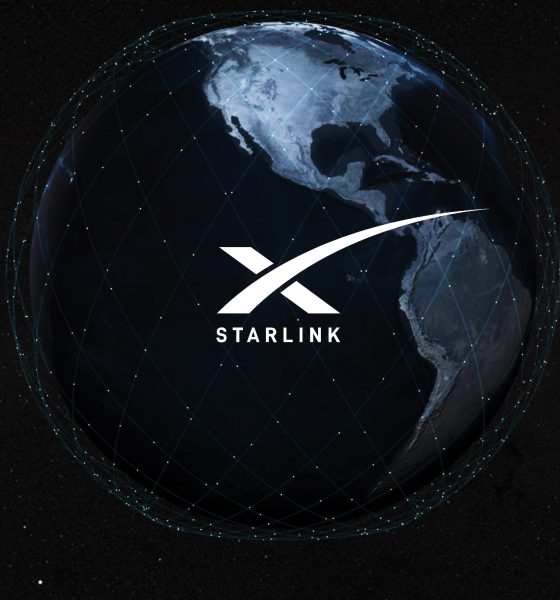

News
SpaceX CEO Elon Musk hints at Starlink’s global reach at Tesla shareholder event
Speaking at Tesla’s annual shareholder meeting, CEO Elon Musk – also CEO of SpaceX – briefly segued to his spaceflight company’s ambitious Starlink program and discussed how he believes the satellite constellation can support no more than 3-5% of the global population.
On May 23rd, SpaceX successfully launched 60 “v0.9” Starlink satellites – weighing as much as 18.5 tons (~41,000 lb) – into LEO, a first step unmatched in ambition in the history of commercial satellites. Delivered to an orbit of ~450 km (280 mi), all but four of the 60 spacecraft have managed to successfully power up their electric ion thrusters and 55 have already raised their orbits to ~500 km (310 mi). For what is effectively a technology/partial-prototype demonstration mission, the record of Starlink v0.9 performance is extremely impressive and bodes well for a quick and relatively easy design optimization (to “v1.0”) before true mass production can begin.
In general, Musk was more than willing to acknowledge some of the potential limitations of a Low Earth Orbit (LEO) broadband satellite constellation at Tesla’s 2019 shareholder meeting. Most notably, he bluntly noted that Starlink is not designed to service densely populated areas and will predominately be focused on low to medium-density populaces. Triggered by an investor’s question about the possibility of integrating Starlink into future Tesla cars, Musk reiterated that SpaceX’s first-generation Starlink user terminals (i.e. ground antennas) will be roughly the size of a “medium pizza”.
Although pizza sizing is not exactly ISO-certified, Starlink’s user antennas will presumably be around 12-14 inches (30-36 cm) wide and come in a square form factor. Thanks to the use of what Musk believes are the most advanced phased array antennas in the world, neither the antennas on Starlink satellites or user terminals will need to physically move to maintain a strong signal. Still, as Musk notes, an antenna the size of medium pizza box would still stick out like a sore thumb on the typically all-glass roof of an of Tesla’s consumer cars, although built-in Starlink antennas might actually make sense on Tesla Semis.
Elon Musk’s specific comment indicated that Starlink – at least in its current iteration – was never meant to serve more than “3-5%” of Earth (population: ~7.8 billion), with most or all of its users nominally located in areas with low to medium population densities. This generally confirms technical suspicions that Starlink (and other constellations like OneWeb and Telesat) is not really capable of providing internet to everyone per se.
For SpaceX, each Starlink satellite – per official statements that the first 60 satellites represent more than 1 terabit of bandwidth – likely offers bandwidth of roughly 17-20 gigabits per second. In simpler terms, this means that one Starlink satellite overhead could theoretically support as many as 4000 users simultaneously streaming YouTube videos at 1080p/30fps, a figure that sounds impressive but glosses over the sheer number of people that live in cities. Importantly, every single Starlink satellite at ~550 km will likely have a service radius of several thousand – if not tens of thousands of – square kilometers.

Even though the US is exceptionally large and spread out relative to most other countries, a single square kilometer of New York City, Los Angeles, San Francisco, Boston, Miami, Seattle, or dozens of other cities could effortlessly saturate a Starlink satellite’s bandwidth. Even the smallest of towns and cities could easily use most or all of ~20 Gbps at peak hours. In short, Starlink is going to be extremely bandwidth-constrained. Even if SpaceX can double or triple each satellite’s bandwidth and have 10-100 satellites overhead and capable of delivering internet at any given moment, it’s hard to imagine that Starlink will ever be able to serve every person that falls under its coverage area.
Additionally, this means that there is a strong chance that Starlink internet customers will be subject to relatively strict bandwidth limitations and throttling at peak hours. Thankfully, these limitations will be made entirely out of technical necessity, standing in stark contrast to the arbitrary, greed-motivated carriers and ISPs Americans are almost universally accustomed to. In an absolute worst-case scenario, Starlink’s already-connected US customers would get roughly the same quality of service they are used to at roughly the same price. However, they would be able to rest assured that their money was going to SpaceX instead of filling the pockets of the robber-baron-esque shareholders and executives that run American ISPs.

Ultimately, the estimates provided above are exceptionally conservative and generally assume worst-case scenarios. SpaceX could very well beat expectations and develop unique and innovative ways of efficiently using its available bandwidth, while also tirelessly working to improve its technology and expand the carrying capacity of newer satellites. In general, CEO Elon Musk’s comments serve as an excellent temper to the hype surrounding Starlink. SpaceX isn’t going to initially be breaking the backs of Comcast or Time Warner but there’s no reason to believe that that day will never come.
Check out Teslarati’s Marketplace! We offer Tesla accessories, including for the Tesla Cybertruck and Tesla Model 3.

News
Tesla FSD fleet is nearing 7 billion total miles, including 2.5 billion city miles
As can be seen on Tesla’s official FSD webpage, vehicles equipped with the system have now navigated over 6.99 billion miles.

Tesla’s Full Self-Driving (Supervised) fleet is closing in on almost 7 billion total miles driven, as per data posted by the company on its official FSD webpage.
These figures hint at the massive scale of data fueling Tesla’s rapid FSD improvements, which have been quite notable as of late.
FSD mileage milestones
As can be seen on Tesla’s official FSD webpage, vehicles equipped with the system have now navigated over 6.99 billion miles. Tesla owner and avid FSD tester Whole Mars Catalog also shared a screenshot indicating that from the nearly 7 billion miles traveled by the FSD fleet, more than 2.5 billion miles were driven inside cities.
City miles are particularly valuable for complex urban scenarios like unprotected turns, pedestrian interactions, and traffic lights. This is also the difference-maker for FSD, as only complex solutions, such as Waymo’s self-driving taxis, operate similarly on inner-city streets. And even then, incidents such as the San Francisco blackouts have proven challenging for sensor-rich vehicles like Waymos.
Tesla’s data edge
Tesla has a number of advantages in the autonomous vehicle sector, one of which is the size of its fleet and the number of vehicles training FSD on real-world roads. Tesla’s nearly 7 billion FSD miles then allow the company to roll out updates that make its vehicles behave like they are being driven by experienced drivers, even if they are operating on their own.
So notable are Tesla’s improvements to FSD that NVIDIA Director of Robotics Jim Fan, after experiencing FSD v14, noted that the system is the first AI that passes what he described as a “Physical Turing Test.”
“Despite knowing exactly how robot learning works, I still find it magical watching the steering wheel turn by itself. First it feels surreal, next it becomes routine. Then, like the smartphone, taking it away actively hurts. This is how humanity gets rewired and glued to god-like technologies,” Fan wrote in a post on X.
News
Tesla starts showing how FSD will change lives in Europe
Local officials tested the system on narrow country roads and were impressed by FSD’s smooth, human-like driving, with some calling the service a game-changer for everyday life in areas that are far from urban centers.

Tesla has launched Europe’s first public shuttle service using Full Self-Driving (Supervised) in the rural Eifelkreis Bitburg-Prüm region of Germany, demonstrating how the technology can restore independence and mobility for people who struggle with limited transport options.
Local officials tested the system on narrow country roads and were impressed by FSD’s smooth, human-like driving, with some calling the service a game-changer for everyday life in areas that are far from urban centers.
Officials see real impact on rural residents
Arzfeld Mayor Johannes Kuhl and District Administrator Andreas Kruppert personally tested the Tesla shuttle service. This allowed them to see just how well FSD navigated winding lanes and rural roads confidently. Kruppert said, “Autonomous driving sounds like science fiction to many, but we simply see here that it works totally well in rural regions too.” Kuhl, for his part, also noted that FSD “feels like a very experienced driver.”
The pilot complements the area’s “Citizen Bus” program, which provides on-demand rides for elderly residents who can no longer drive themselves. Tesla Europe shared a video of a demonstration of the service, highlighting how FSD gives people their freedom back, even in places where public transport is not as prevalent.
What the Ministry for Economic Affairs and Transport says
Rhineland-Palatinate’s Minister Daniela Schmitt supported the project, praising the collaboration that made this “first of its kind in Europe” possible. As per the ministry, the rural rollout for the service shows FSD’s potential beyond major cities, and it delivers tangible benefits like grocery runs, doctor visits, and social connections for isolated residents.
“Reliable and flexible mobility is especially vital in rural areas. With the launch of a shuttle service using self-driving vehicles (FSD supervised) by Tesla in the Eifelkreis Bitburg-Prüm, an innovative pilot project is now getting underway that complements local community bus services. It is the first project of its kind in Europe.
“The result is a real gain for rural mobility: greater accessibility, more flexibility and tangible benefits for everyday life. A strong signal for innovation, cooperation and future-oriented mobility beyond urban centers,” the ministry wrote in a LinkedIn post.
News
Tesla China quietly posts Robotaxi-related job listing
Tesla China is currently seeking a Low Voltage Electrical Engineer to work on circuit board design for the company’s autonomous vehicles.

Tesla has posted a new job listing in Shanghai explicitly tied to its Robotaxi program, fueling speculation that the company is preparing to launch its dedicated autonomous ride-hailing service in China.
As noted in the listing, Tesla China is currently seeking a Low Voltage Electrical Engineer to work on circuit board design for the company’s autonomous vehicles.
Robotaxi-specific role
The listing, which was shared on social media platform X by industry watcher @tslaming, suggested that Tesla China is looking to fill the role urgently. The job listing itself specifically mentions that the person hired for the role will be working on the Low Voltage Hardware team, which would design the circuit boards that would serve as the nervous system of the Robotaxi.
Key tasks for the role, as indicated in the job listing, include collaboration with PCB layout, firmware, mechanical, program management, and validation teams, among other responsibilities. The role is based in Shanghai.
China Robotaxi launch
China represents a massive potential market for robotaxis, with its dense urban centers and supportive policies in select cities. Tesla has limited permission to roll out FSD in the country, though despite this, its vehicles have been hailed as among the best in the market when it comes to autonomous features. So far, at least, it appears that China supports Tesla’s FSD and Robotaxi rollout.
This was hinted at in November, when Tesla brought the Cybercab to the 8th China International Import Expo (CIIE) in Shanghai, marking the first time that the autonomous two-seater was brought to the Asia-Pacific region. The vehicle, despite not having a release date in China, received a significant amount of interest among the event’s attendees.








